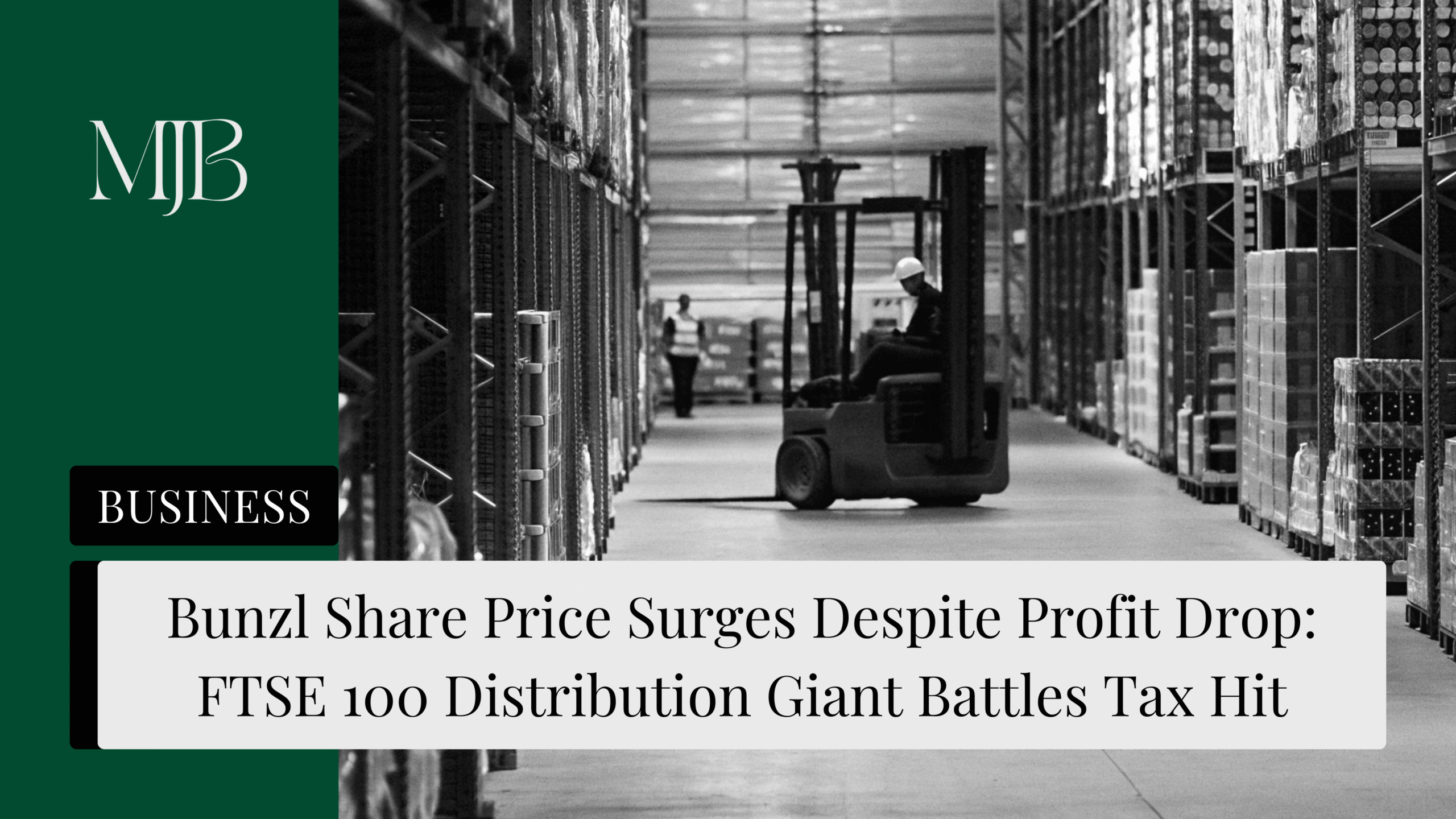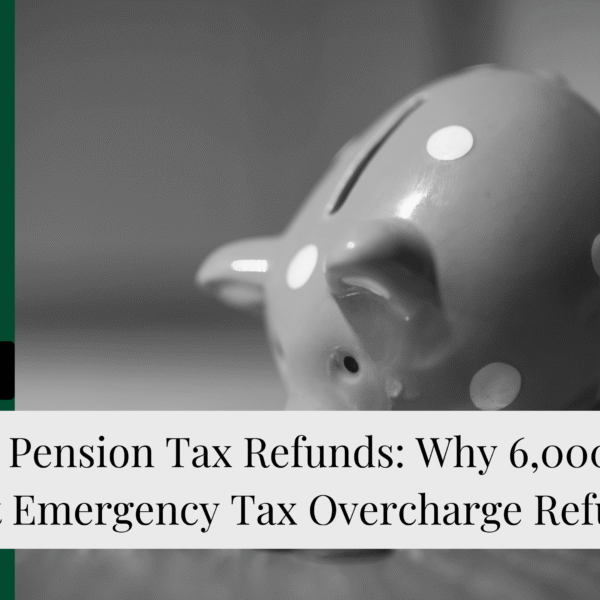Ever seen a company’s profits tank 11% whilst its share price rockets up 5%? Welcome to the FTSE 100 distribution giant’s H1 2025 story. Despite adjusted operating profit sliding from £455.5m to £404.5m, Bunzl stock proved that sometimes the market cares more about your next move than your last stumble.
The London-listed business faced a perfect storm: Rachel Reeves’ National Insurance hike dampened UK demand, whilst regional headaches in North America and Continental Europe squeezed margins. But with Bunzl shares jumping nearly 5% on Tuesday morning, investors are clearly betting on the company’s turnaround strategy paying off.
What Hit Bunzl’s H1 2025 Performance?
Rachel Reeves National Insurance Changes Impact Demand
Chancellor Rachel Reeves’ National Insurance hike from 13.8% to 15% wasn’t just political theatre—it packed a punch for Bunzl’s UK operations. The April changes, combined with the lowered threshold from £9,100 to £5,000, dampened demand across key sectors where the distribution giant operates.
“The sales environment has been challenging due to increases in employers’ National Insurance rates,” the company admitted. Translation? Higher payroll taxes made their customers think twice about spending.
Bunzl didn’t just sit there and take it however… They fought back with productivity gains, cutting headcount and property costs to cushion the blow.
Bunzl Nisbets Acquisition: Growth with Growing Pains
Bunzl’s £339m Nisbets acquisition delivered impressive results, boosting UK and Ireland revenue by 31.5% to £904.2m. The takeover strengthened Bunzl’s position in the foodservice distribution market, but came with margin pressure as expected during integration.
The acquisition came with a margin squeeze, dropping from 7.6% to 6.6% in the UK and Ireland. It’s the classic growth trade-off—more revenue, thinner margins initially.
Bunzl Regional Performance Challenges in H1 2025
North America Operations Face Execution Issues
Bunzl’s North American business—its largest market—hit some speed bumps with what management diplomatically termed “execution challenges.” For a FTSE 100 company, this corporate speak suggests significant operational difficulties that directly impacted Bunzl’s profit margins.
Continental Europe Market Weakness
Europe brought its own set of problems for Bunzl’s distribution network. The region experienced weak market conditions with ongoing deflation pressures. For a distribution company like Bunzl, deflation creates a challenging environment where revenue shrinks even when moving the same volume of products.
These regional woes pushed Bunzl’s overall operating margin down from 8% to 7%. Not catastrophic, but definitely not the direction shareholders want to see.
Why Bunzl Stock Price Rose Despite Lower Profits
Despite the 11.2% profit drop, Bunzl shares climbed nearly 5% on Tuesday morning. The positive Bunzl share price movement reflects three key investor confidence factors:
Management Action Plan: CEO Frank van Zanten isn’t just acknowledging problems—he’s implementing solutions. Leadership changes, cost reduction programmes, and increased focus on higher-margin own-brand products demonstrate proactive management of current challenges.
Maintained Full-Year Guidance: In today’s uncertain economic climate, Bunzl’s decision to hold firm on full-year revenue growth expectations signals management confidence in their recovery strategy.
H2 2025 Margin Recovery Expected: Bunzl expects operating margins to improve in the second half thanks to North American performance improvements, easier European year-on-year comparatives, and materialising Nisbets acquisition synergies.
Market analyst Adam Vettese from eToro summarised it: “Whilst near term earnings are under pressure, Bunzl’s resilience and disciplined expansion provide confidence in its ability to overcome these issues.”
Bunzl Investment Outlook: Recovery Strategy in Focus
Bunzl’s H1 2025 results tell the story of short-term challenges versus long-term value creation. Whilst adjusted operating profit fell 11.2% and National Insurance changes pressured UK demand, the market’s 5% share price rise suggests investors believe in the distribution giant’s recovery potential.
For Bunzl shareholders, the key question centres on execution speed: can management implement their performance improvement plan faster than economic headwinds can impact results? With revenue still growing (up 4.2% to £5.8bn) and decisive management action underway, the FTSE 100 company appears well-positioned to navigate current market challenges.
FAQ
Q1: Why did Bunzl share price rise despite lower H1 2025 profits?
A: Bunzl stock climbed 5% because investors focused on management’s recovery strategy rather than historical performance. The company’s maintained full-year guidance and clear action plan for H2 2025 improvements outweighed the 11% profit decline.
Q2: How did Rachel Reeves National Insurance changes affect Bunzl?
A: The National Insurance rate increase from 13.8% to 15%, plus the lowered threshold from £9,100 to £5,000, directly reduced customer demand in Bunzl’s key UK sectors. However, the company partially offset this impact through productivity improvements and cost savings.
Q3: What is Bunzl’s strategy for improving operating margins?
A: Bunzl is implementing leadership changes, pursuing cost reduction programmes, focusing on higher-margin own-brand products, and realising synergies from the £339m Nisbets acquisition to improve profitability.
Q4: Which Bunzl regions performed worst in H1 2025?
A: North America faced significant “execution challenges” as Bunzl’s largest market, whilst Continental Europe dealt with weak market conditions and ongoing deflation pressures affecting the distribution business.
Q5: Is Bunzl still expecting growth in 2025?
A: Yes, Bunzl maintained its full-year guidance for modest revenue growth and expects seasonally higher operating margins in H2 2025, supported by regional improvements and acquisition synergies.
DISCLAIMER
Effective Date: 15th July 2025
The information provided on this website is for informational and educational purposes only and reflects the personal opinions of the author(s). It is not intended as financial, investment, tax, or legal advice.
We are not certified financial advisers. None of the content on this website constitutes a recommendation to buy, sell, or hold any financial product, asset, or service. You should not rely on any information provided here to make financial decisions.
We strongly recommend that you:
- Conduct your own research and due diligence
- Consult with a qualified financial adviser or professional before making any investment or financial decisions
While we strive to ensure that all information is accurate and up to date, we make no guarantees about the completeness, reliability, or suitability of any content on this site.
By using this website, you acknowledge and agree that we are not responsible for any financial loss, damage, or decisions made based on the content presented.






